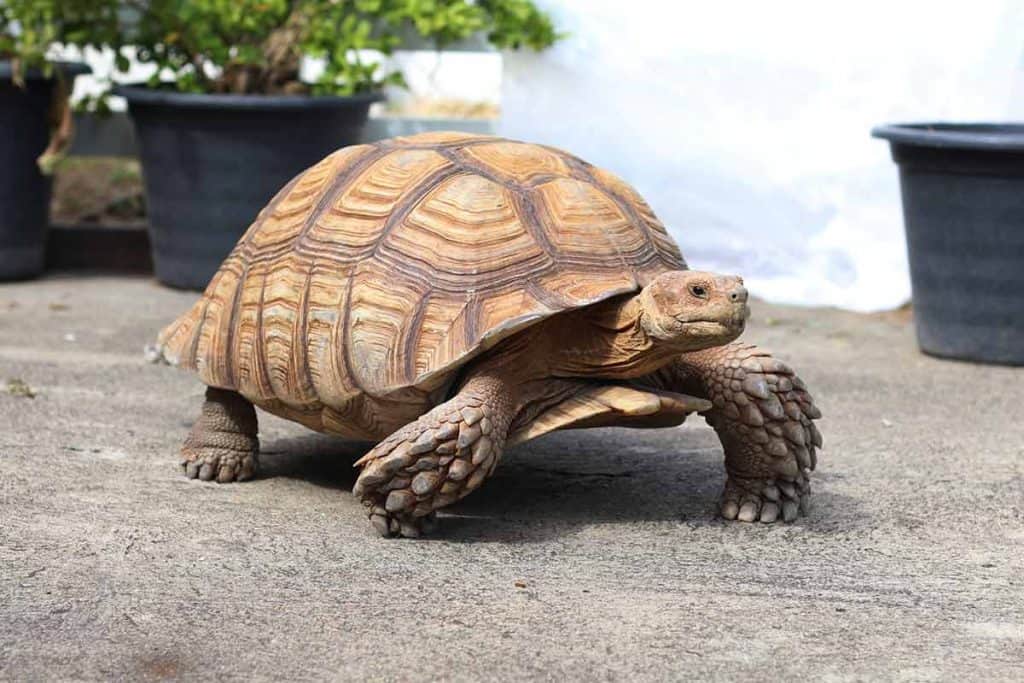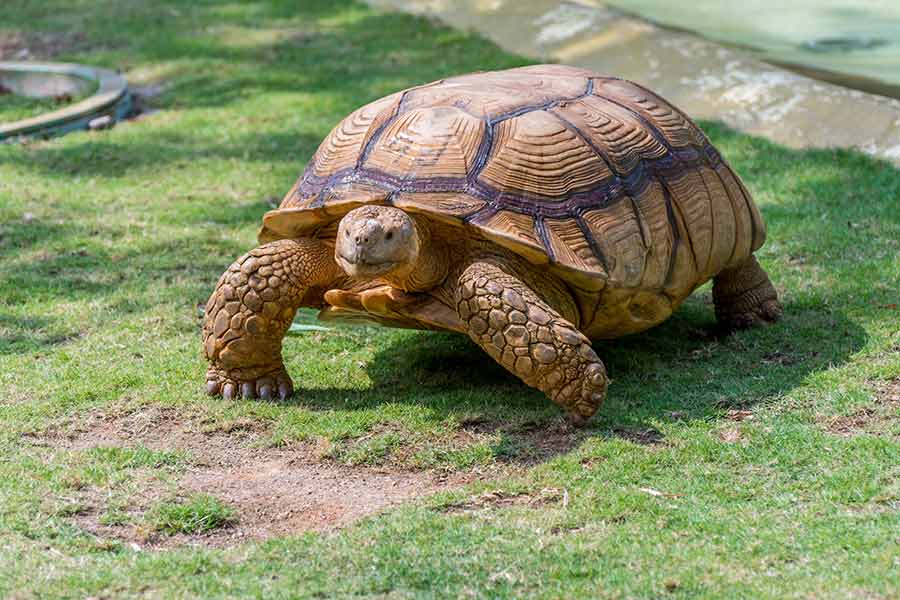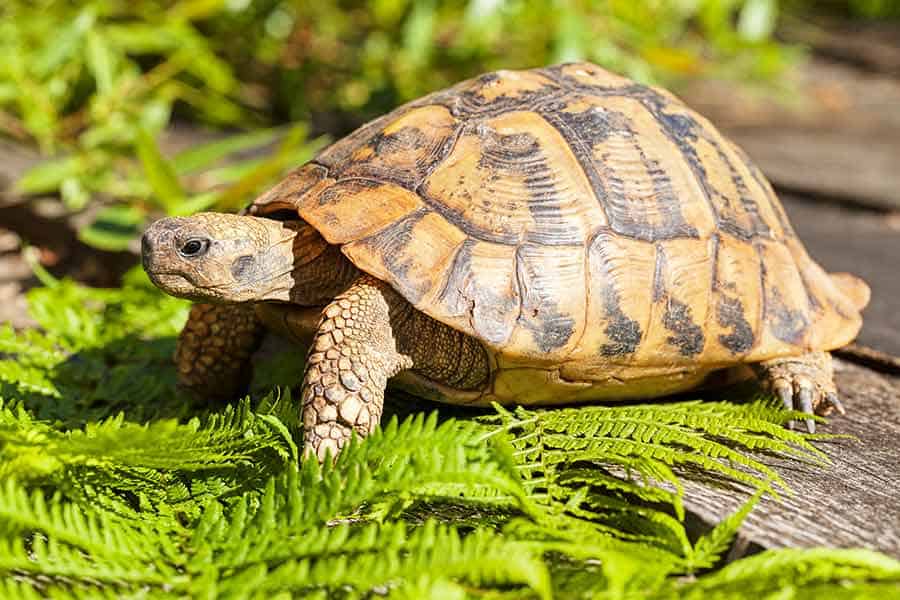Tortoise care is relatively simple because they are quite hardy animals once they are out of their hatchling stage. There are many different kinds of tortoises of varying sizes, care levels, and lifespans that you can keep as pets. Each species has its own unique requirements in terms of its ideal enclosure size and husbandry requirements.
However, there are some general rules you can follow no matter what species of tortoise you own as a pet. All tortoises can be housed outdoors if you live in the appropriate climate. However, they should still have access to an enclosed space that will make them feel safe.
Tortoises have become remarkably popular pets in recent years. However, learning how to properly care for them can be a little difficult, especially for beginner pet owners. Here, you will find some of the general rules and guidelines to follow regardless of the species of tortoise you have.
Once you have decided on the species of tortoise you will be getting as a pet, you can tailor the general care requirements and recommendations you will find here to suit their specific needs.
Tortoises live for 50 to 100+ years, so make sure that you are ready for such a long-term commitment! Read on to find out how to take care of your tortoise.
Enclosure Size and Setup
One of the most important aspects of your tortoise’s care regardless of the species is their enclosure. Most tortoises should be housed outside, as they need sunlight and fresh air to maintain their full health.
However, if you have an especially small breed of tortoise such as the Russian, Hermann’s, or Egyptian tortoise, then you could house them inside your home in a large enclosure with additional lighting.
Outdoor enclosures can be made of sturdy wooden fence posts, sturdy wire, or various other kinds of fencing. Keep in mind that tortoises are built like tanks, and a Sulcata will bulldoze its way through garden furniture. Many species are also skilled at burrowing or climbing out of their enclosures.
If your tortoise has free reign in the garden, make sure your pool, furniture, flower beds, and cars are protected by fences. There are a few reasons for this:
- Tortoises will drown if they fall into the pool.
- They are grazers and will devour your flowers, vegetable patches, and herb gardens.
- Large sulcatas and other large species can get underneath cars and push up and damage the undercarriage.
Enclosure Size
Tortoises may move slowly, but they need lots of space to roam. Enclosures that are too small and do not allow your tortoise to roam and graze freely will cause them stress and shorten their lifespan by making them sick.
The enclosure size for your tortoise will depend on its species. Smaller tortoises will generally need an enclosure that is four feet long by four feet wide, while larger species need much larger enclosures.
Research your tortoise species carefully! Some species are diggers, and some are climbers! If your tortoise is a digger, then you will need to extend the fence of the enclosure at least a few feet into the ground. If your tortoise is a climber, the fence will need to be at least four feet high.
Small Tortoise Enclosures
If you are housing your small tortoise indoors, then an enclosure that is at least 50 gallons is the minimum size to use. However, this is for a single small tortoise.
It would be better to use a tortoise table to provide your tortoise with ample space to roam and fresh, free-flowing air. Diggers in this category should have their outdoor fences dug at least a few feet into the ground.
Medium and Large Tortoise Enclosures
Medium and large tortoises will, of course, need enclosures that are larger than those of smaller species. For most tortoises, their enclosures should be roughly six feet by eight feet, though this can vary by species. Sulcata tortoises will need an entire garden to roam around in. Additionally, before you let your tortoise roam freely, make sure there are no toxic plants that they can get to.
Diggers in this category will need their outdoor fences dug at least four to six feet into the ground.
Substrate
Substrate is the material you’ll use to cover the floor of your tortoise’s enclosure. Most tortoises do well on a drier substrate. If the substrate is too wet or holds too much moisture, then it can promote fungal growth. As you are not picking up and handling your tortoise every day (you should not be, as this can stress them out), you may not notice the fungal growth until it has reached a critical stage.
While substrates should not be kept damp, they should still be absorbent to deal with messes and water spillages that happen. If the substrate absorbs poops, pees, and water spills, then your tortoise will not be standing in it.
Good substrates for most tortoises include coconut coir, bioactive soil meant for reptiles, and Timothy hay. Timothy hay in particular makes excellent bedding as well as provides something nutritious for your tortoise to graze on.
Decorations
Tortoises are curious, intelligent creatures who love to explore and move around their environment. Having decorations in their enclosures provides the vital enrichment they need to thrive and be happy in captivity. These decorations can include branches, logs, rocks, and other natural items.
However, they do not necessarily need to be natural. You can also use PVC piping, crates and boxes, and bricks. Always make sure the decorations are sturdy and won’t topple over and hurt your tortoise whether they are underneath them or have managed to climb on top.
Including several hides in the enclosure is also essential to keeping your tortoise happy and feeling secure. The hides should be big enough for them to fit in comfortably but not too big that they feel vulnerable. To give your tortoise plenty of privacy, their hides should be opaque so no light gets in.
Temperature
Tortoises generally like it quite hot, so their enclosures usually need to have a decent temperature gradient of 75°F to 95°F with a basking spot of anywhere from 90 to 105°F.
Temperature, like many other aspects of care, is species-specific, so you will need to do some extra research to ensure your tortoise is getting exactly what it needs.
To create basking spots, you can use basking bulbs or ceramic heat emitters to generate enough heat. Always make sure the bulbs and emitters are not bare and are covered so that your tortoise cannot burn themselves.
Using heat rocks and bare heating pads is not advisable because your tortoise can accidentally burn itself, or worse, kill and cook itself before it realizes it is too hot.
Lighting
Like many other reptiles, tortoises need UVB light in captivity. Ideally, they should get this directly from the sun in their outdoor enclosures. However, if you are unable to house your tortoise outside, then you will need to install a lighting setup in their indoor enclosure.
The lights should be spread throughout the enclosure. During the 12-hour daylight period of their photocycle, they should have access to normal light as well as UVB light.
The UVB bulbs will need to be replaced every six months because the UVB will run out before the bulb stops emitting light.
Make sure the heat in their enclosure is located in a single basking area so they can move to cooler sections of their enclosure to regulate their body temperatures.
Humidity
Tortoises generally do not need high humidity. Many tortoises need humidity that is only around 50%. However, others need humidity that is a bit higher at 70% to 80%. You will need to research the species of tortoise you have to determine what humidity level they need in their enclosure.
Incorrect humidity (either too high or too low) will result in dehydration, bacterial infections and fungal growth, or respiratory illness.
Check out our guide on dehydrated tortoises to see how you can identify dehydration in your pet tortoise and what steps you can take to rectify it.
Humidity can be added to the enclosure by misting it daily or installing a more elaborate automatic misting system. Humidity and hydration can also be maintained by providing the tortoise with plenty of water to soak in from time to time.
Soaking and Hydration
Almost all tortoises love a good bath. They may be land turtles, but they still have a strong love for the water.
You should provide your tortoise with a shallow bath they can sit in. They should be able to comfortably stand or relax in the water without their heads being submerged.
Tortoises soak because, again, they love water, and it helps them thermoregulate and assists with shedding. While they are soaking, they drink a lot, so regular soaking also helps to keep them properly hydrated. In addition to this, water also reduces the weight they feel on their joints and is a pleasantly cool sensation.
Feeding Your Pet Tortoise
Pet tortoises belong to one of three feeding categories: arid tortoises, grassland tortoises, and jungle/forest tortoises.
Each feeding group has its own special diet that reflects the types of food they would have access to in the wild.
Be sure to research what type of natural food your tortoise’s species would have access to in the wild and try to feed them the same or similar things.
Fresh Food: Greens, Fruits, Vegetables, and Other Vegetation
Tortoises should have access to fresh grasses to eat. This food can be:
- Alfalfa hay
- First- and second-cut timothy hay
- Oat hay
- Other grasses that are high in fiber
Your tortoise can also be fed some fruits, greens, and vegetables, such as:
- Dandelion and mustard greens
- Beet tops
- Endive
- Escarole
- Yellow and orange squash
- Bell peppers
- Dark leaf lettuces
Although they should only get fruits as an occasional treat because of the high sugar and oxalate content, you can feed your tortoise the following fruits from time to time:
- Blackberries
- Strawberries
- Blueberries
- Apples
- Pears
- Watermelon
- Sweet melon
Remember to remove all pips, stones, and seeds from the fruit before feeding it to your tortoise.
Prepackaged Food
There are awesome prepackaged commercial foods available for tortoises. These foods are targeted towards specific feeding groups and species. They are meant to supplement the fresh produce you feed your tortoise.
For a detailed review of these feeding groups along with great product recommendations, head on over to our article dedicated to the best tortoise food.
Drinking Water
Tortoises need constant access to fresh, clean water. Their baths will get dirty often and they may poop and pee in them, which usually makes them less than ideal to drink from.
Provide your tortoise with an additional small dish of clean water every day to drink from. The dish should be shallow enough so they do not have to stretch their necks up to access the water.
Common Health Problems for Tortoises
As a tortoise owner, you will need to watch out for some common health problems. Some of these problems can be reversed if they are caught and treated early. However, they can all cause lasting damage and death if they are left untreated.
Swollen Joints
Swollen and puffy legs and joints are a sign of malnutrition. To treat this, you’ll likely need to take a careful look at what you are feeding your tortoise and see what vitamins and minerals are missing from their diet. If you are unsure, contact your veterinarian to help you figure out what to add to their daily diet.
Respiratory Infections
All reptiles are susceptible to respiratory infections like pneumonia. If you see that your tortoise has a runny or crusty nose, has labored breathing, or is bubbling, then they need to be seen by a vet urgently. Respiratory infections are often caused by improper humidity conditions or dirty, dusty substrate.
Pyramiding
Lack of
This condition usually looks as if the affected tortoise has little raised pyramids on its shell–hence the name, “pyramiding.”
To prevent or treat pyramiding, up the amount of
FAQs About Tortoise Care
Can I handle my tortoise?
Tortoises should not be handled frequently. Their shells are part of their skeletons, and if they are mishandled, then their shells can become damaged and they could be seriously injured. Additionally, they do not enjoy being picked up.
However, tortoises love a good scratch. Always wash your hands before and after giving your tortoise some neck or chin scritches.
If you are looking for a reptile that loves to be handled, check out our article on lizards that love to be touched!
Can I let my tortoise around my other pets?
Your tortoise should only be allowed around your other pets with careful supervision. Tortoises bite, and so do dogs and cats. They can seriously injure each other.
Additionally, other common pets are natural predators of tortoises, so your tortoise may experience serious stress from being around them. Watch out for this behavior and remove them from the situation if things get tense.
Slowly Strolling Off…
Tortoise care is relatively simple because tortoises are hardy little dinosaurs. Tortoises live for 50 to 100+ years, so be prepared to take care of them for a very long time.
The information provided to you here is a general guide for tortoises. However, your pet’s care will need to be tailored to their specific species as they all have their own particular needs.
Good luck with caring for your tiny or mighty tort!




